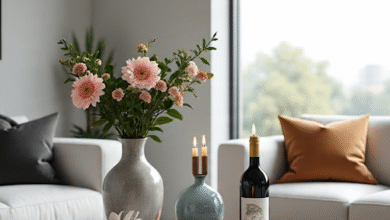Next-Gen Home Designs for How We Live Now

As we advance into the 21st century, the architecture of our homes is evolving to meet the changing needs and desires of homeowners. Technological advancements, environmental awareness, and changes in lifestyle are all influencing factors in the world of home design. Next-generation house designs offer more than just shelter; they embody a sense of personal identity, efficiency, and comfort that aligns with today’s way of living.
Embracing Technology in Home Design
The integration of technology in home design is no longer a futuristic concept but a present-day reality. Smart homes equipped with interconnected systems for climate control, security, and entertainment are becoming increasingly popular. Touch screens, voice-controlled devices, and home automation provide convenience and efficiency, all while potentially saving energy and reducing costs.
Flexible Living Spaces
The dynamic nature of modern lifestyles requires homes to be just as adaptable. Open plan concepts have paved the way to flexible living spaces that can change depending on the time of day or the occasion. Rooms are no longer dedicated to a single purpose but instead are designed to be versatile, transforming a home office into a guest bedroom or a dining room into a workspace with ease.
Eco-Friendly and Sustainable Designs
Environmental sustainability is at the forefront of new-age home design. Eco-friendly materials, energy-efficient appliances, and solar panel installations are some of the features that new homeowners often seek. Advances in insulation materials and window designs also contribute to reducing the carbon footprint, making homes not only aesthetically pleasing but also kind to the planet.
Designs That Encourage Health and Wellbeing
The notion that our surroundings can have a profound effect on our wellbeing has led to designs that promote a healthy lifestyle. Access to natural light, improved air quality, and incorporation of greenery through indoor plants or living walls can improve mental and physical health. The layout of homes now often encourages movement, with stairs and open spaces to reduce sedentary behaviour.
Community and Connectivity
As more individuals work remotely, the importance of having community spaces within residential areas has increased. Shared amenities such as gardens, gyms, and communal kitchens foster social interaction and build community. Designing homes with connectivity in mind, both digitally and socially, are trends that are shaping the neighbourhoods of the future.
Multi-Generational Living
Homes are increasingly being designed to accommodate multi-generational living. With ageing populations and the rising cost of care, designs that allow for the elder generation to live comfortably alongside younger family members are growing in demand. Features like ground-floor bedrooms and walk-in showers cater to the accessibility needs of older residents.
Blending Indoor and Outdoor Spaces
There’s a growing trend to blur the lines between indoor and outdoor living. Merging these spaces extends the living area, offering more room for relaxation and entertainment. Glass walls that slide open, covered patios, and outdoor kitchens are just some elements of this fusion, connecting inhabitants with nature without having to step outside their homes.
Personalisation and Customisation
The opportunity to personalise and customise home designs is a key factor in modern architecture. Modular building systems allow homeowners to configure layouts and aesthetic details that match their personal style and needs. Tailoring homes to individual preferences is now possible without significantly inflating costs.
Accessible and Inclusive Design
Creating spaces that are accessible to everyone, regardless of age or ability, is an important consideration. Next-gen home designs focus on inclusivity, with features like wide doorways, minimal steps, and touchless faucets that cater to a diverse range of inhabitants and visitors.
The Role of Home Design in Lifestyle
Home design is deeply intertwined with lifestyle; it influences daily routines, relaxation, work, and social interaction. As life becomes increasingly multifaceted, so too must our living spaces. This means that architects and developers must create innovative solutions that reflect contemporary needs and aspirations.
Why the Right House Designs Matter
Choosing the right house designs is not just about aesthetics or trends. It’s a decision that impacts everyday comfort, energy consumption, and overall quality of life. Thoughtful design can support sustainable living, accommodate changing family dynamics, and enhance the sense of community, all of which are becoming essential considerations in the modern world.
Conclusion
Next-gen home designs have the potential to transform how we live now and into the future. With a focus on sustainability, flexibility, technology, and personal well-being, these designs are reshaping our approach to living spaces. The home is no longer just a place to reside; it is a dynamic environment that evolves with our changing needs, encourages a connection with the community and the natural world, and reflects personal values and lifestyle choices.
The commitment to creating homes that are not only beautiful but functional and forward-thinking is imperative in today’s society. For those embarking on the journey of building or redesigning a home, considering these next-generation principles is a step towards a more harmonious and sustainable future.




